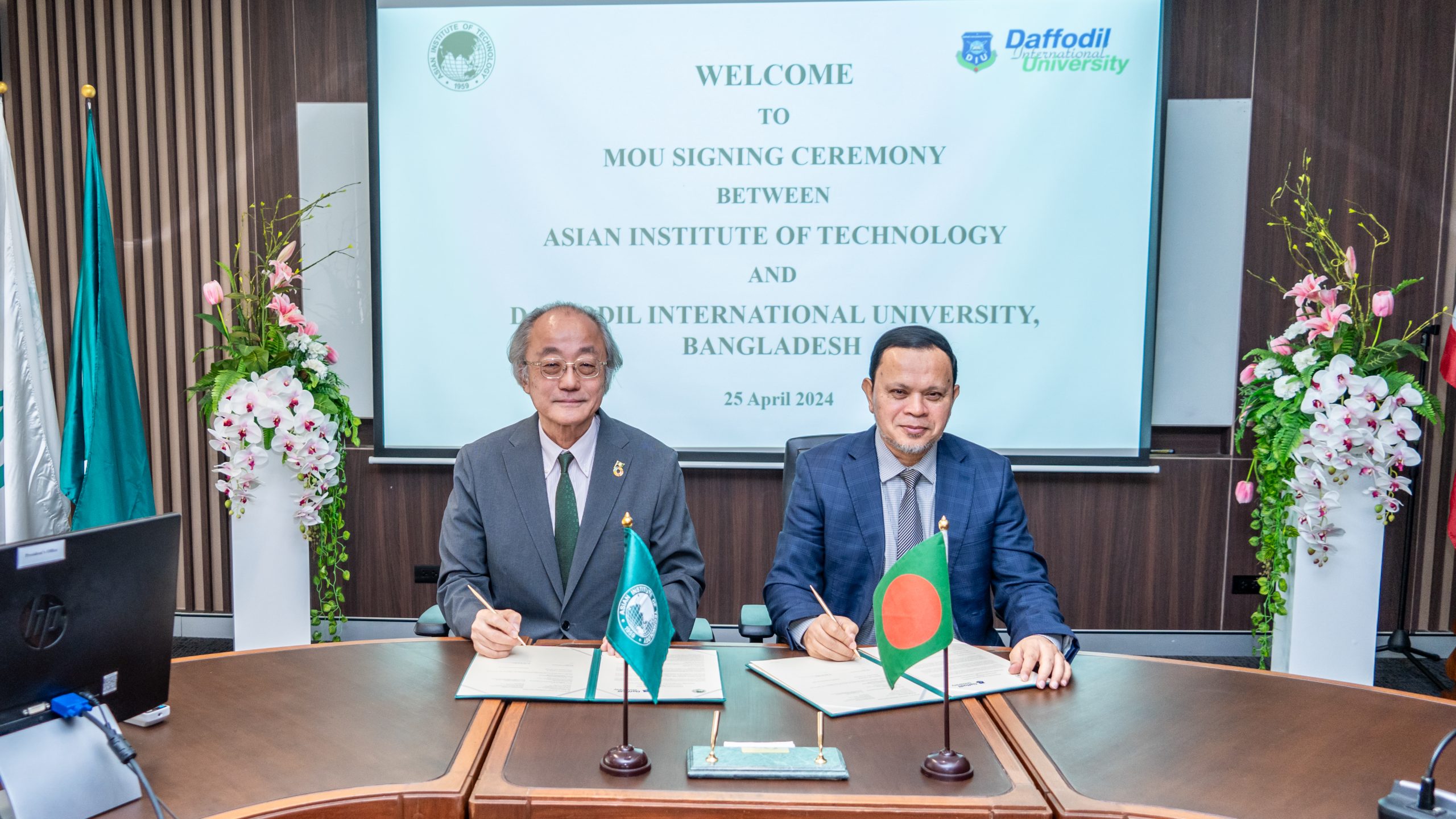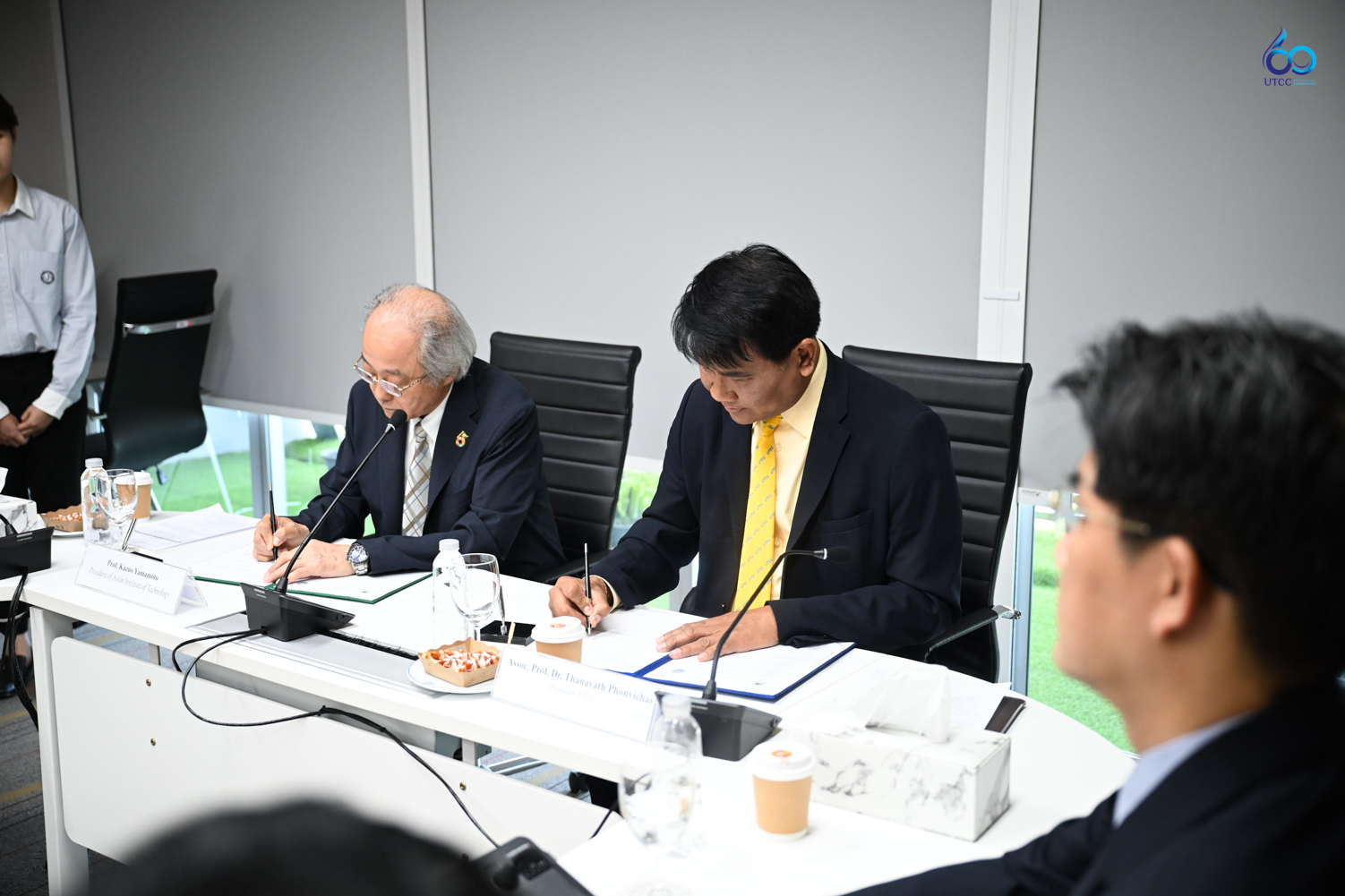By School of Engineering and Technology
21 March 2024: The Mekong River Commission (MRC) Secretariat, led by the Chief Executive Officer, Dr. Anoulak Kittikhoun, visited the Hydraulics Laboratory of the AIT School of Engineering and Technology (SET). This visit, led by Dean Prof. Sangam Shrestha and Dr. Mohana Sundaram Shanmugam , Program Chair of Water and Engineering Management (WEM) aimed to present to Dr. Kittikhoun the crucial physical model projects pertinent to hydroelectric infrastructure within the Mekong River basin.

Figure 1: Representatives from the Mekong River Commission led by CEO Dr. Anoulak Kittikhoun received by representatives from AIT School of Engineering and Technology (SET) led by Dean Prof. Sangam Shrestha
Among the projects showcased during the visit was the Physical Hydraulic Model Study of the Luang Prabang Hydroelectric Power Project (HEPP) Pre-Construction Works. Situated along the Mekong River in Lao PDR, the Luang Prabang HEPP operates on a run-of-river scheme. The physical model presented during the visit aimed to assess the feasibility of various infrastructural elements, including construction pits and downstream cofferdams, crucial for facilitating the main run-of-river scheme’s construction.

Figure 2: MRC CEO Dr. Anoulak Kittikhoun on a tour around WEM Hydraulics Laboratory viewing the physical hydraulic model of the Luang Prabang HEPP pre-construction works
Additionally, attention was drawn to the Physical Hydraulic Model Test of the Baffle Drop Shaft for the Nam E-Moun Hydropower Project in Lao PDR. Located in Sekong Province, this project harnesses energy from the Nam E-Moun and Houay Het Rivers, both secondary tributaries of the Mekong River. Through a combination of Computational Fluid Dynamics (CFD) and physical modeling, WEM sought to establish optimal operation rules for the drop shaft, essential for its effective functioning.

Figure 3: Physical hydraulic model of drop shaft for Nam Emoun Hydropower Project, Lao PDR
A third significant project highlighted during the visit was the Hydraulic Model Study of the Nam Theun 1 Hydroelectric Power Project, also situated in Lao PDR. With a capacity to produce 650 MW of power, a substantial portion of which is exported to Thailand, this project holds strategic importance. Located in the Nam Kading River within Bolikhamxay Province, the physical model developed at WEM’s Hydraulics Laboratory replicated the Roller-compacted concrete (RCC) dam, including its spillway, radial gates, pier design, and power intake structure.
The presentations offered the MRC Secretariat profound insights into the progress of hydroelectric initiatives across the Mekong River basin. Notably, these projects are testaments to the role played by the WEM Program as the primary researchers behind the development of these physical models. Their contributions serve as indispensable tools aiding the MRC’s mission and benefiting the Mekong Region as a whole. This visit shows the importance of collaboration to foster sustainable development and efficient water resource management throughout the region.

Figure 4: On-going presentation of WEM Hydraulics Laboratory to Mekong River Commission

Figure 5: Mekong River Commission CEO Dr. Anoulak Kittikhoun presented with token by Dean Prof. Sangam Shrestha







